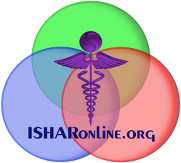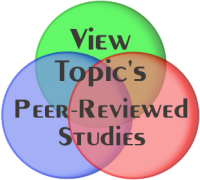Homeopathy

Functional Summary
|
Modality |
· Materia Medica |
Diluted substances that cause the symptoms of a disease in healthy people will cure similar symptoms in sick people. |
|
Intention |
· Restoration |
“Potentiated” substances enhance the body’s normal healing and self-regulatory processes. |
|
Geo-Cultural |
· German |
Created in 1796 by Samuel Hahnemann |
Topic Summary
Homeopathy was created when Samuel Hahnemann was translating a medical treatise, and became skeptical as to its claim that cinchona could cure malaria. Upon ingesting cinchona, Hahnemann experienced what he believed to be symptoms of malaria and came to believe that “like cures like.” Materials which cause symptoms in healthy people would cure them in sick people. Another key belief in homeopathy is the “law of minimum dose” which is the notion that the lower the dose of the medication, if agitated, will have greater effectiveness.
Homeopathy maintains that treatments aimed at alleviating symptoms of disease are ineffective at curing them because disease tends to be traced to some sort of chronic or inherited tendency, or “miasm.” The most common conditions people seek homeopathic treatment for are asthma, ear infections, hay fever, mental health conditions, allergies, dermatitis, arthritis, and high blood pressure.
Many in the scientific community see homeopathy as a pseudoscience, claiming that its active ingredients are so diluted that they cannot possibly have any affect (homeopathic solutions are often diluted to the point they are chemically indistinguishable from water or sugar). Others have submitted possible explanations for perceived effects to discredit the cures. Among others, a placebo effect has been credited for people improving after taking homeopathic medicine, with the remedies described as no more than sugar pills.
Homeopathy is used moderately in the United States, with the FDA regulating the remedies people can buy. The Indian government recognizes homeopathy as one of its national systems of medicine, and requires a diploma in homeopathy and official registration in order to practice. Homeopathy is covered by the public health services offered in France, the United Kingdom, Denmark, and Luxembourg, among others.
There are numerous distinctions regarding how homeopathy is practiced, with the main divisions relating to the specific modality of the treatment, the theoretical basis, the perceived nature of the miasm and the methods of producing the remedy.
Type of homeopathic treatment: Classical, Non-classical, Integrative, Shamanic, Flower Remedies, Nosodes, Allergodes, Isopathic, Sarcodes, Constitutional, Tautodes, Anthroposophical, Homotoxicological, Tissue Salts.
Leading schools of Homeopathic thought: Classical (Hahnemann), Emergent, Constitutional, Pluralist, Complex, Sakaran, Saine.
Style of Miasm: Principal Miasm (Psora, Sycosis, Tubercular, Syphilis), Twelve Personality Types (six genotypes, six phenotypes), Principal Constitutional Type (Argentum Nitricum, Calcarea Carbonica, Ignatia, Lycopodium, Natrum Maristicum, Phosphorus, Sepia, Sulpher, Arsenicum, Graphites, Murcurius Solubilis, Lachesis, Nux Vomica, Pulsatilla Silicea).
Types of remedy production: Classical, Mechanical, in plastic, in glass, preserved in alcohol, done in water only, tincture type instead of true homeopathic remedy.
Research Summary
Even at the time of its conception, homeopathy was considered controversial. In 1906, a reflection on homeopathic literature mocked it and compared it to the likes of Alice in Wonderland and other novels. However, critics did concede that some homeopaths were knowledgeable doctors, and some homeopathic literature was quite good, though primarily because it contained little actual discussion of homeopathy.
In 1997 a double-blind, placebo-controlled, randomized clinical trial of homeopathic arnica C30 for pain after a total abdominal hysterectomy was tested. Of 73 patients, 35 received placebo and 38 received arnica C30. No significant difference could be demonstrated between the two groups.
However, in 1991, three professors of medicine from the Netherlands, none of them homeopaths, performed a meta-analysis of 25 years of clinical studies using homeopathic medicines and published their results in the British Medical Journal. This meta-analysis covered 107 controlled trials, of which 81 showed that homeopathic medicines were effective, 24 showed they were ineffective, and 2 were inconclusive. Specifically, they found that: 13 of 19 trials showed successful treatment of respiratory infections, 6 of 7 trials showed positive results in treating other infections, 5 of 7 trials showed improvement in diseases of the digestive system, 5 of 5 showed successful treatment of hay fever, 5 of 7 showed faster recovery after abdominal surgery, 4 of 6 promoted healing in treating rheumatological disease, 18 of 20 showed benefit in addressing pain or trauma, 8 of 10 showed positive results in relieving mental or psychological problems, and 13 of 15 showed benefit from miscellaneous diagnoses.
Despite the high percentage of studies that provided evidence of success with homeopathic medicine, many of these studies have had their methodology challenged. Still, the researchers found 22 high-caliber studies, 15 of which showed that homeopathic medicines were effective. Of further interest, they found that 11 of the best 15 studies showed efficacy of these natural medicines, suggesting that the better designed and performed the studies were, the higher the likelihood that the medicines were found to be effective. Although people unfamiliar with research may be alarmed to learn that many of the studies on homeopathy were flawed in one significant way or another, it is notable that research in conventional medicine during the past 25 years has had a similar percentage of flawed studies.
Perspectives
ISHAR strives to present all of our data in an impartial, informative manner. Nonetheless, there are always different viewpoints on various topics, and ISHAR encourages users to review the perspectives on other informational sites, then come to their own conclusions regarding what they consider the least biased. The sites below were chosen to represent a wide spectrum of approaches to this topic, and none are endorsed or promoted by ISHAR itself.


